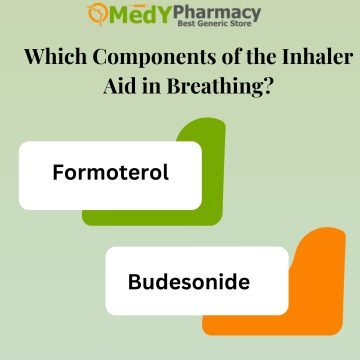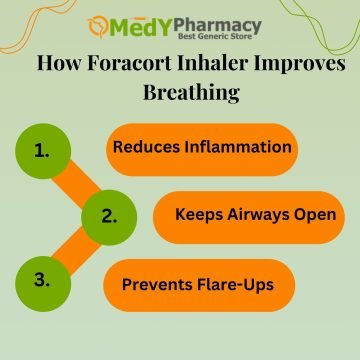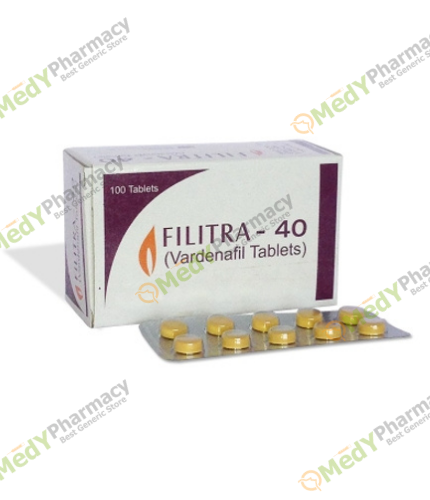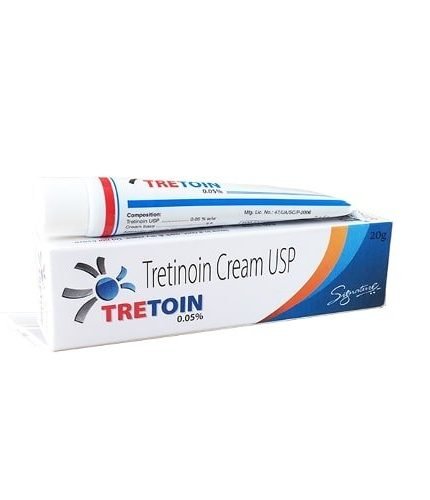Introduction:
Do you now have a respiratory problem and are unsure of how to resolve it? The usage of the greatest inhaler is one of the best remedies for these kinds of issues. Breathing in helps your airways widen and allow more air to pass.
This article will explain the Foracort Inhaler and how it may improve your breathing.
Follow the directions on the Foracort inhaler. Depending on your medical condition, your doctor will advise how frequently you should use this. Some patients may have upper respiratory tract infections, flu, cough, back discomfort, elevated heart rates, shaking, headaches, sore throats, hoarse voices, and fungal infections in their mouths. Over time, the majority of these side effects go away without the need for medical intervention. However, please see your doctor if the adverse effects worsen or continue.
Inhalers are little, portable devices that let you inhale medication straight into your lungs through your mouth. Soft mist, dry powder, and metered-dose inhalers are among the varieties. Although they may be prescribed for other illnesses, they are mostly used to treat COPD and asthma. Common drugs that are inhaled include corticosteroids and bronchodilators.
What Is A Foracort Inhaler?
The Foracort Inhaler 200 drug is delivered straight to your lungs by this little, portable gadget. This can be a light mist, a measured dosage, or a dry powder. Medications that assist expand airways or lessen lung inflammation are used in the most prevalent kinds.
Chronic obstructive pulmonary disease (COPD) and asthma are two respiratory disorders that are treated with this drug.
Usually, this is used to maintain and manage chronic illnesses over the long term rather than to treat acute symptoms right away. Even in the absence of symptoms, the inhaler is taken daily to manage persistent symptoms and lower the chance of exacerbations.
To alleviate the chronic symptoms of asthma and COPD, the combine two medications into a single inhaler, which facilitates breathing. By relaxing the muscles in the airways and blocking the release of certain chemical messengers that induce inflammation, it relieves inflammation.
Your physician will give you instructions on how often to use your inhaler. This medicine may start to show results in a few days, but it may take a few weeks for it to fully take action. Continue taking this medication even if you are asymptomatic to make sure it is working as intended because consistent usage is required for it to be successful.
If the drug is stopped, symptoms might get worse. This medication should not be used for abrupt dyspnea; instead, a rescue inhaler should be utilized. For the best effects, using an inhaler correctly is crucial.
Typical adverse effects include headache, sore throat, musculoskeletal discomfort, hoarseness, respiratory tract infections, nausea, vomiting, respiratory tract infections, coughing, and elevated heart rate. Consult your doctor before stopping the medicine if you experience any of these negative effects. After using the inhaler, washing your mouth and brushing your teeth can help avoid some of these symptoms.
Serious, though uncommon, adverse effects are possible; if you’re worried about them, talk to your doctor. If you are pregnant, expecting to become pregnant, or nursing, you should let your doctor know before taking this drug. You should also let them know if you have any liver or kidney disorders.
Foracort Inhaler – An Overview for People with COPD and Asthma
When it comes to inhalers, this is the best option for those who are struggling with it.
- COPD
- Asthma
With continued usage, this kind of inhaler improves your breathing technique and produces progressive improvements.
Research has indicated that persons with asthma and COPD can benefit from using Foracort Rotacaps 100 for a few months. When taken regularly at a set time and the recommended dosage, it helps your breathing adjust and gradually lowers your risk of having an asthma attack.
Budesonide aids in reducing the persistent inflammation that characterizes COPD and asthma. Formoterol improves airflow by keeping the airways open. This can lessen the frequency of exacerbations of COPD or asthma episodes when used regularly.
This medication helps treat COPD and asthma by combining a bronchodilator with a steroid. It prevents tightness of the airways and lowers inflammation. But rather than using it to address symptoms right away, it’s crucial to use it frequently as a maintenance therapy. Whenever possible, adhere to the dose and usage recommendations of your healthcare practitioner.
Which Components of the Inhaler Aid in Breathing?
2 components are included in the composition that is described on the label.

- Formoterol
This long-acting beta-agonist drug is mostly used to treat respiratory diseases including COPD and asthma. It facilitates better breathing by relaxing the muscles around the airways, which causes them to open up.
To relax and expand the airways, formoterol stimulates beta-2 receptors in the smooth muscle. Breathing becomes easier as a result, particularly while experiencing symptoms like coughing, wheezing, and shortness of breath.
Because formoterol relieves symptoms gradually—typically for 12 hours—it is frequently used for long-term treatment of asthma and COPD rather than for the immediate alleviation of acute symptoms.
This is frequently used to treat asthma and COPD in conjunction with a corticosteroid, such as budesonide. Formoterol helps regulate symptoms over the long term and avoids airway constriction, while corticosteroids decrease inflammation.
Depending on their unique health profile, people with heart disease, high blood pressure, or other illnesses may need to take formoterol with caution or not at all.
By assisting in airway opening and breathing improvement, this drug effectively manages the symptoms of persistent asthma and COPD. However, it’s crucial to keep in mind that its purpose is long-term treatment rather than immediate symptom alleviation. If your doctor advises it, always take it as directed and in conjunction with other therapies.
- Budesonide
Many disorders involving inflammation, especially in the lungs and airways, are treated with this corticosteroid drug. Asthma and chronic obstructive pulmonary disease (COPD) combination inhalers frequently contain it to assist in lowering inflammation and stopping symptoms.
The way budesonide works is by decreasing airway inflammation. By inhibiting the immune system’s reaction to allergens and irritants, it reduces airway edema, mucus production, and constriction. This facilitates easier breathing by increasing airflow.
Budesonide is an excellent corticosteroid that reduces inflammation, which is a contributing factor to the symptoms of asthma and COPD. This helps control long-term symptoms and avoid flare-ups.
Budesonide helps control long-term airway inflammation in people with COPD, which lessens symptoms and exacerbation frequency. It aids in the long-term control of the illness.
For severe asthma episodes or unexpected breathing issues, budesonide is not a panacea. It is a long-term control drug that has to be taken regularly as directed.
To prevent any withdrawal symptoms or exacerbations, your doctor could advise progressively lowering the dosage rather than discontinuing budesonide abruptly if you must.
Because corticosteroids can influence other medical issues, those with diabetes, liver disease, high blood pressure, or other diseases should speak with their doctor before using budesonide.
How Do An Inhaler And A Nebulizer Vary From One Another?
Both nebulizers and inhalers can provide medications to treat lung disorders. Inhalers, on the other hand, are portable devices that don’t require energy. It typically administers a spray or dry powder, however others utilize a gentle mist of liquid medicine.
Nebulizers are bigger devices that may be plugged in or run on a battery. You wear them with a mouthpiece or mask. With nebulizers, the medication is administered for minutes as opposed to a single breath.
How Can You Improve Your Breathing With A Foracort Inhaler?
The advantages of breathing are numerous when you use an inhaler like Foracort. Let’s learn more about it.
- Calms the Breathing
According to several human studies, daily usage helps patients relax their breathing, according to a study done at an asthma research facility in the US. People have used it to gain control over their breathing patterns.
- Decreases the Probability of an Asthma Attack
Additionally, the study showed that consuming Foracort Respules 0.5 mg can lower the risk of an asthma attack by more than 60 to 70%. People with asthma and COPD have been able to live regular lives and get over their anxiety because of this.
Foracort gradually enhances your breathing by lowering inflammation and maintaining open airways. Use it as directed regularly, follow the directions for inhalation, and be persistent in controlling triggers and keeping an eye on your health to obtain the maximum benefit. Talk to your healthcare practitioner about any worries you may have regarding its efficacy or adverse effects.
Does Anyone Need To Use A Foracort Inhaler?
The majority of people who take inhalers have long-term lung disorders that compromise their ability to breathe, such as asthma or chronic obstructive pulmonary disease. Fast-acting inhalers are used during an asthma attack or COPD exacerbation, whereas daily inhalers are used to prevent or control symptoms.
Because it opens up the airways and reduces inflammation, this can help treat asthma by making breathing easier.
People with COPD, especially those with emphysema or chronic bronchitis, can use it to enhance their airway.
If a patient is unable to control symptoms of these illnesses with alternative therapies, such as bronchodilators or corticosteroids alone, a healthcare professional would prescribe it.
It’s crucial to take it exactly as directed because abuse (such as excessive usage) may result in negative consequences or decreased efficacy.
Any doctor who can assess the particular health circumstances should choose whether you or someone else could require it.
How Foracort Inhaler Improves Breathing

- Reduces Inflammation
Budesonide, a component of corticosteroids, helps to lessen airway inflammation. Breathing difficulties can result from inflammation narrowing the airways in both asthma and COPD. The airways are kept open by lowering this inflammation, which enhances airflow and facilitates breathing.
- Keeps Airways Open
This contains a long-acting bronchodilator called formoterol. By causing the muscles around the airways to relax, it helps them remain open for a longer amount of time. This facilitates the passage of air into and out of your lungs, so alleviating symptoms such as chest tightness, wheezing, and shortness of breath.
- Prevents Flare-Ups
Frequent usage of Foracort helps to avoid asthma or COPD flare-ups or exacerbations. Foracort Rotacaps 100 contains a steroid that reduces inflammation, which can cause these flare-ups. Controlling inflammation lowers the chance of symptoms getting worse and maintains improved lung function.
How the Foracort Inhaler Operates
This medication is a mixture of formoterol and the corticosteroid budesonide. By working inside the cells lining the nasal channel and airways and preventing the production of certain chemicals that cause inflammatory responses and allergies, budesonide, a member of the corticosteroid class, reduces irritation and swelling.
It relieves sinus pain, runny or clogged nose, and sneezing as a result. In contrast, Formoterol is a member of the class of bronchodilators, often known as long-acting beta-agonists, or LABAs, which help people with asthma and COPD breathe by relaxing and widening the muscles in their respiratory airways.
Chronic illnesses including asthma and COPD can be effectively treated with the combination of formoterol and budesonide, which offers both long-term bronchodilation and inflammation management.
Although it doesn’t offer instant relief during an asthma attack, it does help control symptoms daily and avoid flare-ups.
Each puff delivers both drugs, and it is usually taken twice a day, in the morning and the evening. Regular use is essential for long-term symptom treatment.
To guarantee its efficacy and reduce the possibility of adverse effects, make sure you follow your doctor’s instructions on how to take it.
It is a preventative medication, which means that instead of offering instant relief like a rescue inhaler, it gradually controls and manages symptoms.
Is It Possible For Someone Without Asthma To Take A Foracort Inhaler?
Yes, for respiratory disorders other than asthma, doctors prescribe inhaled corticosteroids and rescue inhalers. Use the inhaler that was recommended to you exclusively, just like you would with any prescription.
This is intended to treat chronic respiratory diseases that produce persistent airway inflammation and constriction. If someone who does not have these diseases takes it, they may not see any benefit, and there may be side effects or hazards related to the drug’s impact on the lungs and body.
Using an inhaler like Foracort without a medical necessity or a doctor’s prescription may be considered misuse, potentially leading to negative consequences. Furthermore, depending on medication for short-term comfort rather than addressing the root cause of symptoms may result in mismanagement of the illness.
It is crucial to first speak with a healthcare provider if someone without asthma or COPD is thinking about using Foracort or is considering using it for a purpose other than the one for which it was prescribed. They can evaluate the condition, provide substitute therapies, and guarantee security.
In certain rare instances, a doctor may recommend this kind of treatment for other particular ailments, but only after carefully weighing the dangers.
Tips for Using Your Foracort Inhaler Effectively
- Use It Regularly
This must be taken every day, even if you’re feeling well because it’s meant to be used for long-term control. You might not get the greatest control of your disease if you skip doses or use it just when symptoms start to show.
- Correct Inhalation Technique
When using the inhaler, give it a good shake. Before you inhale, take a deep breath to clear your lungs.
Press down on the inhaler to release the medication, then take a deep, steady breath. To ensure that your lungs receive the entire dosage of your medication, try to take a deep breath.
To enable the drug to enter your airways deeply, hold your breath for ten seconds or so after you inhale. After using the inhaler, rinse your mouth to avoid sore throats and lower your risk of oral thrush.
- Monitor Your Breathing
Monitor your emotional state every day. Inform your doctor if you continue to have trouble breathing or if your symptoms don’t get better. The dosage or combination of drugs may occasionally need to be changed.
- Combine with Other Treatments
This is frequently used in conjunction with other drugs, such as a rescue inhaler, to provide instant relief from unexpected symptoms. Pay attention to what your doctor says about how to take your medications together.
- Avoid Triggers
Avoiding stressors like allergens, tobacco smoking, and air pollution can exacerbate symptoms of asthma or COPD, even though Foracort helps control inflammation.
- Follow Up with Your Doctor
To make sure this is working for you and to make any required changes to your treatment plan, it’s crucial to have regular check-ups with your healthcare practitioner.
Benefits of Foracort Inhaler
The muscle relaxes, preventing the airways in your lungs from shutting. It helps you breathe by easing symptoms like coughing, wheezing, chest tightness, and dyspnea, which makes daily chores simpler to handle. This medicine is dependable and safe. It usually takes a few minutes to get going and can continue for several hours. Avoid stopping use unless your doctor instructs you to.
- Reduces Inflammation
Asthma and COPD symptoms are largely caused by airway inflammation, which a corticosteroid helps to alleviate. Wheezing, coughing, and shortness of breath are lessened since this keeps the airways open and stops them from constricting.
Better overall lung function is made possible by Foracort’s ability to reduce inflammation and avoid flare-ups and exacerbations.
- Muscles Relaxed
The long-acting bronchodilator (LABA) formoterol facilitates the flow of air into and out of the lungs by relaxing the muscles around the airways.
The airways are kept open by this relaxation, which enhances airflow and relieves chronic symptoms like dyspnea, particularly at night or in the morning.
- Symptom Control
Long-lasting comfort is provided by the forecourt, whose effects continue for almost 12 hours. By controlling persistent asthma and COPD symptoms day and night, this lessens the need for frequent use of other short-acting drugs.
It is a maintenance drug, which means that instead of offering immediate relief during an acute attack, it helps manage symptoms over time.
- COPD Flare-Ups
Because Foracort controls inflammation, regular use helps avoid asthma attacks and exacerbations of COPD. For asthmatics, this translates into fewer hospitalizations and flare-ups. It can assist individuals with COPD in lowering the frequency of severe and incapacitating acute exacerbations.
- Lung Function
This helps improve lung function over time by lowering inflammation and maintaining open airways, which in turn makes breathing easier and lessens symptoms like coughing and wheezing.
Additionally, it can improve daily activity levels and exercise tolerance in individuals with asthma or COPD, enabling them to live more active lives.
- Combination Therapy
Foracort is a convenient treatment for asthma and COPD since it combines two powerful drugs into a single inhaler: formoterol, a bronchodilator, and budesonide, a steroid.
When these drugs are combined into a single inhaler, fewer treatments are required, and it is guaranteed that inflammation and airway constriction are treated simultaneously.
- Future Lung Damage
By decreasing inflammation, a drug such as Foracort can help individuals with COPD slow down the disease’s progression and prevent more lung damage.
It is particularly crucial for people with COPD since it helps sustain lung function and gradually control chronic symptoms.
- Improve Quality of Life
Breathing becomes easier, fewer emergency treatments are required, and symptoms of asthma and COPD are better controlled with regular use, all of which can greatly enhance the quality of life. A general improvement in well-being, fewer interruptions to everyday activities, and improved physical functioning can result from this.
Side effects of Foracort Inhaler
- Cough
- Headache
- Nasopharyngitis
- Upper respiratory tract infection
- Sinus inflammation
- Stomach discomfort
- Fungal infection of the oropharynx
- Tremors
- Palpitations
- Voice change
Bone weakening brought on by prolonged use of corticosteroids, such as budesonide, raises the risk of fractures.
The most common side effects are headache, hoarseness, and throat irritation, however, this is usually well managed. Even though severe adverse effects like elevated heart rate or chest pain are uncommon, they nevertheless need to be treated right away.
It is crucial to use the inhaler as directed by your doctor and to have regular checkups because prolonged use may also have more serious side effects, such as decreased immunity or bone thinning.
What Ailments Are Treated By Inhalers?
These are most frequently treated with inhaled drugs. Sometimes, doctors will prescribe them to treat bronchitis and other respiratory illnesses.
- Cystic fibrosis
- Diabetes
- Flu
- Parkinson’s disease
- Schizophrenia
Inhalers For Asthma: Which Ones Are Used?
Providers frequently recommend a rescue inhaler for prompt asthma attack relief in addition to inhaled corticosteroids (ICS) to prevent asthma symptoms. A long-acting bronchodilator, such as a long-acting muscarinic antagonist (LAMA) or a long-acting beta-agonist (LABA), may be prescribed by your doctor if ICS medicines are ineffective in controlling your asthma.
When asthma symptoms suddenly intensify or during an asthma attack, these inhalers are used to provide instant relief. Breathing becomes easier as they swiftly relax and open up the muscles surrounding the airways.
To manage asthma over time and stop symptoms from developing, preventer inhalers are utilized. Even when you are feeling well, they are administered daily to manage airway inflammation.
These work by combining an ICS with a long-acting beta-agonist (LABA) to reduce inflammation and maintain airway opening. They are utilized for asthma maintenance over the long term.
Leukotriene modifiers are frequently administered in conjunction with inhalers to treat asthma, even though they are not inhalers. They function by preventing the release of leukotrienes, which are substances that contribute to asthma’s inflammatory process.
Patients with severe asthma who don’t improve with conventional treatments might be administered biologic medicines. Although these are injectable drugs, they are crucial for managing asthma in certain individuals whose condition is extremely challenging to control.
Every type of inhaler has a distinct function in the management of asthma, and your doctor will choose the best one for you based on the severity of your condition, your response to therapy, and your general health.
For best results, it’s important to take your medications regularly and to use each inhaler as directed by your doctor.
What Normalizes Your Breathing With This Inhaler?
Here is a step-by-step breakdown of how the Foracort Respules 1 mg inhaler works.
The aforementioned drug, formoterol, acts as an airway dilator. By relaxing the muscles in the airways, it increases the amount of space available for air to enter and exit.
Budesonide is a steroid that works by blocking certain chemical messengers that cause the airways to expand and collapse more.
Budesonide helps to open up the airways and improve airflow and breathing by lowering this inflammation.
By preventing airway inflammation from worsening over time, regular inhaler use helps to lessen symptoms including coughing, wheezing, and shortness of breath.
Formoterol facilitates the movement of air into and out of the lungs by relaxing these muscles, opening the airways, and increasing airflow.
Throughout the day and night, this impact helps to keep more open and smoother airways, and it can persist for 12 hours.
Air may enter and exit the lungs freely when the muscles of the airways relax.
Regular usage of Foracort helps to enhance lung function and quality of life by consistently and permanently reducing the symptoms of asthma or COPD.
By using the Foracort inhaler as directed, you can effectively manage the symptoms of COPD or asthma and help restore your breathing. Just keep in mind that, even if you feel OK, you need still to take it every day as part of your maintenance treatment to keep your lungs healthy and avoid flare-ups.
Is It Instantaneous?
No, this inhaler only works gradually and takes time to start operating. It may take at least two to three weeks for the effects of this inhaler to reach their maximum, according to a study on its efficacy.
Though it doesn’t offer immediate relief, budesonide is an anti-inflammatory drug. The airways become less prone to swelling and constriction as a result of the gradual reduction of inflammation. However, for it to truly take effect and alleviate symptoms, consistent use is required for several hours to days.
Over time, this helps with breathing, although it doesn’t offer immediate comfort. It may take a few minutes to many hours for the effects to start, and consistent use is necessary to reap the full benefits. A rescue inhaler is a better choice for quick reaction if you need relief from severe symptoms or during an asthma attack. This is intended to help control and prevent symptoms of long-term illnesses like COPD and asthma.
As you use the Foracort Forte Rotacaps inhaler, it helps you breathe and only gradually improves your breathing. If an asthma attack has already started, the effects of this inhaler might not be very effective.
Among the most popular inhaler brands is this one. Since most local pharmacies and internet Medypharmacy pharmacies carry it, purchasing it might not be a problem.
Despite their ability to cure a wide range of ailments, inhalers are most frequently prescribed by doctors for respiratory disorders like asthma and COPD. It can occasionally be challenging to determine whether you’re using an inhaler correctly and receiving the most benefits.
Ask any questions you may have about correct usage and watch your provider walk you through the process of using your particular gadget.
























